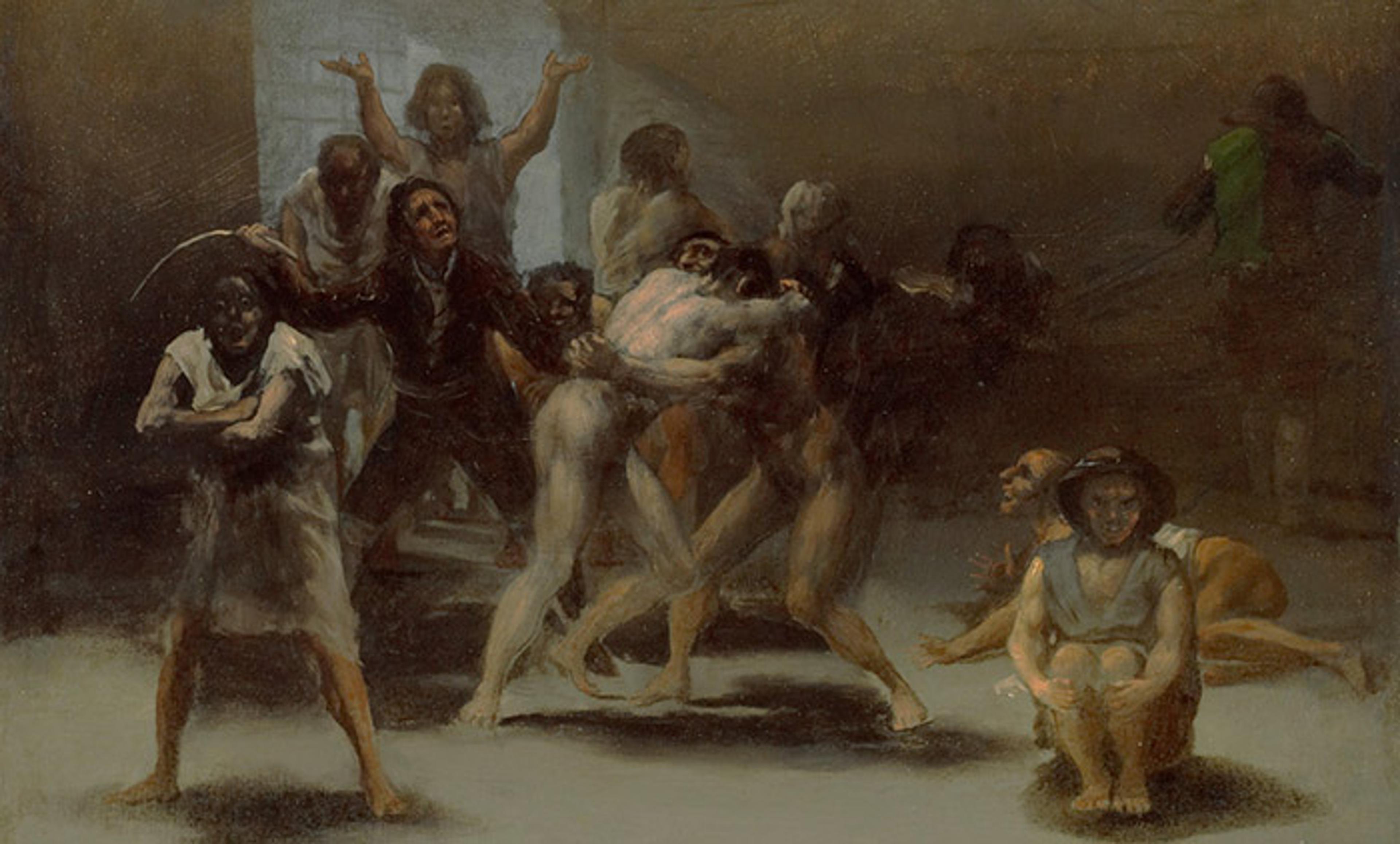Photo by Stanislav Nevyhosteny/Wikipedia
Common sense tells us that only living things have an inner life. Rabbits and tigers and mice have feelings, sensations and experiences; tables and rocks and molecules do not. Panpsychists deny this datum of common sense. According to panpsychism, the smallest bits of matter – things such as electrons and quarks – have very basic kinds of experience; an electron has an inner life.
The main objection made to panpsychism is that it is ‘crazy’ and ‘just obviously wrong’. It is thought to be highly counterintuitive to suppose that an electron has some kind of inner life, no matter how basic, and this is taken to be a very strong reason to doubt the truth of panpsychism. But many widely accepted scientific theories are also crazily counter to common sense. Albert Einstein tells us that time slows down at high speeds. According to standard interpretations of quantum mechanics, particles have determinate positions only when measured. And according to Charles Darwin’s theory of evolution, our ancestors were apes. All of these views are wildly at odds with our common-sense view of the world, or at least they were when they were first proposed, but nobody thinks this is a good reason not to take them seriously. Why should we take common sense to be a good guide to how things really are?
No doubt the willingness of many to accept special relativity, natural selection and quantum mechanics, despite their strangeness from the point of view of pre-theoretical common sense, is a reflection of their respect for the scientific method. We are prepared to modify our view of the world if we take there to be good scientific reason to do so. But in the absence of hard experimental proof, people are reluctant to attribute consciousness to electrons.
Yet scientific support for a theory comes not merely from the fact that it explains the evidence, but from the fact that it is the best explanation of the evidence, where a theory is ‘better’ to the extent that it is more simple, elegant and parsimonious than its rivals. Suppose we have two theories – Theory A and Theory B – both of which account for all observations, but Theory A postulates four kinds of fundamental force while Theory B postulates 15 kinds of fundamental force. Although both theories account for all the data of observation, Theory A is to be preferred as it offers a more parsimonious account of the data. To take a real-world example, Einstein’s theory of special relativity supplanted the Lorentzian theory that preceded it, not because Einstein’s theory accounted for any observations that the Lorentzian theory could not account for, but because Einstein provided a much simpler and more elegant explanation of the relevant observations.
I maintain that there is a powerful simplicity argument in favour of panpsychism. The argument relies on a claim that has been defended by Bertrand Russell, Arthur Eddington and many others, namely that physical science doesn’t tell us what matter is, only what it does. The job of physics is to provide us with mathematical models that allow us to predict with great accuracy how matter will behave. This is incredibly useful information; it allows us to manipulate the world in extraordinary ways, leading to the technological advancements that have transformed our society beyond recognition. But it is one thing to know the behaviour of an electron and quite another to know its intrinsic nature: how the electron is, in and of itself. Physical science gives us rich information about the behaviour of matter but leaves us completely in the dark about its intrinsic nature.
In fact, the only thing we know about the intrinsic nature of matter is that some of it – the stuff in brains – involves experience. We now face a theoretical choice. We either suppose that the intrinsic nature of fundamental particles involves experience or we suppose that they have some entirely unknown intrinsic nature. On the former supposition, the nature of macroscopic things is continuous with the nature of microscopic things. The latter supposition leads us to complexity, discontinuity and mystery. The theoretical imperative to form as simple and unified a view as is consistent with the data leads us quite straightforwardly in the direction of panpsychism.
In the public mind, physics is on its way to giving us a complete picture of the nature of space, time and matter. While in this mindset, panpsychism seems improbable, as physics does not attribute experience to fundamental particles. But once we realise that physics tells us nothing about the intrinsic nature of the entities it talks about, and indeed that the only thing we know for certain about the intrinsic nature of matter is that at least some material things have experiences, the issue looks very different. All we get from physics is this big black-and-white abstract structure, which we must somehow colour in with intrinsic nature. We know how to colour in one bit of it: the brains of organisms are coloured in with experience. How to colour in the rest? The most elegant, simple, sensible option is to colour in the rest of the world with the same pen.
Panpsychism is crazy. But it is also highly likely to be true.
If you enjoyed this Idea, Philip Goff went on to have success with his book Galileo’s Error: Foundations for a New Science of Consciousness. Of the connection between his book and this piece, Philip said: ‘This essay was one of the first times I’d tried to put my academic work in a form that could be understood by a broader audience. The positive response was one of the reasons I went on, two years later, to publish a book-length version of the case for panpsychism – Galileo’s Error (2019). Everything is so specialised now, it’s more important than ever to reach out beyond narrow disciplinary boundaries, and I wish more academics took the time to do this.’ You can also read more from Philip Goff on Aeon here.






